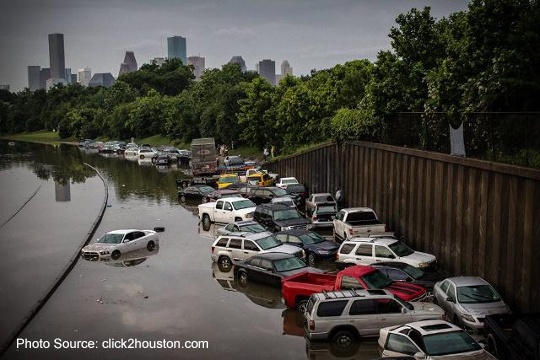The tragic flooding in Houston over the past few weeks has been well covered by the global media, as one would expect when the 4th largest city in the United States is submerged under water. Property insurers are obviously concentrating on claims right now, helping their customers through this traumatic time and getting them ready to rebuild their lives. But as the facts and statistics begin to emerge, it is also interesting and instructive to explore how the risk of events like this can be adequately understood for underwriting and accumulation control by insurers.
Ivan Maddox
Recent Posts
What the Houston Floods Can Teach Us About Managing Flood Risk
Posted by Ivan Maddox on Jun 4, 2015 10:17:00 AM
Topics: Flood Insurance, Insurance Underwriting, Risk Management, Flood Risk
This final blog post introducing earthquake risk and analytics explores a common accompaniment to earthquake: tsunami. This is an interesting peril because it's actually a combination of two perils — earthquake and flood. Tsunami is the surging flood from the ocean caused by sudden seabed vertical displacement (or, rarely, it can be caused by a huge landslide). The earthquake may or may not cause damage on a nearby coast, but the huge volume of water hitting coastal areas at high velocity causes intense damage — frequently complete destruction.
Topics: Natural Hazard Risk, Natural Catastrophe, Other Risk Models, Earthquake, Hurricane
How vulnerable is your building to earthquake risk?
Posted by Ivan Maddox on May 27, 2015 10:00:00 AM
In my previous post, I explored the two earthquake metrics that help insurers understand the likelihood of an earthquake affecting a specific location. This post is about the two metrics that express the severity of property damage in the event an earthquake does occur.
Unlike the science behind earthquake forecasting, which has limited capabilities, the science behind the civil engineering that enables buildings and structures to withstand earthquakes is well developed. Insurance analytics and earthquake models leverage this engineering know-how to estimate potential damage (or vulnerability, to use the modeling term) for a given building.
Topics: Natural Hazard Risk, Risk Models, Earthquake
Is it possible to predict an earthquake? Here are 2 metrics that try.
Posted by Ivan Maddox on May 21, 2015 1:14:44 PM
The modeling of earthquake risk for property insurance is an inexact science. This is because the inner workings of the triggers are so obscure from direct observation; events of interest are relatively infrequent; and the time period between events is so long. These difficulties lead directly to the kind of innovation and creativity necessary to build models that live up to George Box’s tenet that “all models are wrong, but some are useful.”
Topics: Natural Hazard Risk, Risk Models, Earthquake
Our planet is not a solid piece of rock, but rather a boiling slush of magma, with slight movements across the surface hinting at the dynamic inner depths of the planet. Sometimes, the evidence of that inner activity is unleashed as a massive release of energy that rends and shakes the surface of the Earth — a.k.a, an earthquake.
Unlike most natural processes, geology happens over immensely long time frames. Earthquakes (and their Volcanic cousins) occur at intervals that are sometimes longer than the entirety of human history. Interestingly, earthquake records actually comprise some of the earliest historical records we possess.
Topics: Natural Hazard Risk, Natural Catastrophe, Other Risk Models, Earthquake





